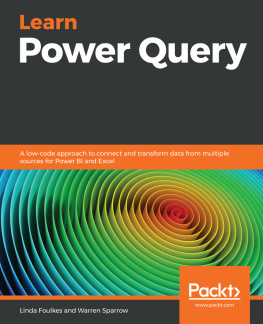Anthony Molinaro - SQL Cookbook: Query Solutions and Techniques for All SQL Users
Here you can read online Anthony Molinaro - SQL Cookbook: Query Solutions and Techniques for All SQL Users full text of the book (entire story) in english for free. Download pdf and epub, get meaning, cover and reviews about this ebook. year: 2020, publisher: OReilly Media, genre: Home and family. Description of the work, (preface) as well as reviews are available. Best literature library LitArk.com created for fans of good reading and offers a wide selection of genres:
Romance novel
Science fiction
Adventure
Detective
Science
History
Home and family
Prose
Art
Politics
Computer
Non-fiction
Religion
Business
Children
Humor
Choose a favorite category and find really read worthwhile books. Enjoy immersion in the world of imagination, feel the emotions of the characters or learn something new for yourself, make an fascinating discovery.
- Book:SQL Cookbook: Query Solutions and Techniques for All SQL Users
- Author:
- Publisher:OReilly Media
- Genre:
- Year:2020
- Rating:4 / 5
- Favourites:Add to favourites
- Your mark:
SQL Cookbook: Query Solutions and Techniques for All SQL Users: summary, description and annotation
We offer to read an annotation, description, summary or preface (depends on what the author of the book "SQL Cookbook: Query Solutions and Techniques for All SQL Users" wrote himself). If you haven't found the necessary information about the book — write in the comments, we will try to find it.
You may know SQL basics, but are you taking advantage of its expressive power? This second edition applies a highly practical approach to Structured Query Language (SQL) so you can create and manipulate large stores of data. Based on real-world examples, this updated cookbook provides a framework to help you construct solutions and executable examples in severalflavors of SQL, including Oracle, DB2, SQL Server, MySQL, andPostgreSQL.
SQL programmers, analysts, data scientists, database administrators, and even relatively casual SQL users will find SQL Cookbook to be a valuable problem-solving guide for everyday issues. No other resource offers recipes in this unique format to help you tackle nagging day-to-day conundrums with SQL.
The second edition includes:
- Fully revised recipes that recognize the greater adoption of window functions in SQL implementations
- Additional recipes that reflect the widespread adoption of common table expressions (CTEs) for more readable, easier-to-implement solutions
- New recipes to make SQL more useful for people who arent database experts, including data scientists
- Expanded solutions for working with numbers and strings
- Up-to-date SQL recipes throughout the book to guide you through the basics
Anthony Molinaro: author's other books
Who wrote SQL Cookbook: Query Solutions and Techniques for All SQL Users? Find out the surname, the name of the author of the book and a list of all author's works by series.








![Molinaro - SQL cookbook [query solutions and techniques for database developers ; covers SQL server, PostgreSQL, Oracle, MySQL, and DB2]](/uploads/posts/book/221182/thumbs/molinaro-sql-cookbook-query-solutions-and.jpg)







